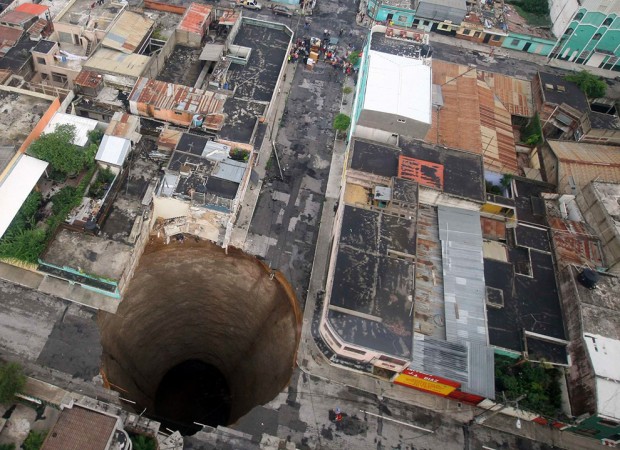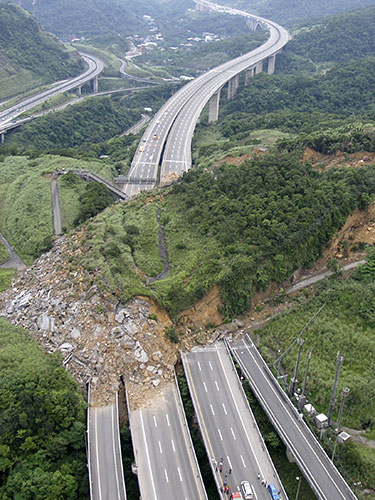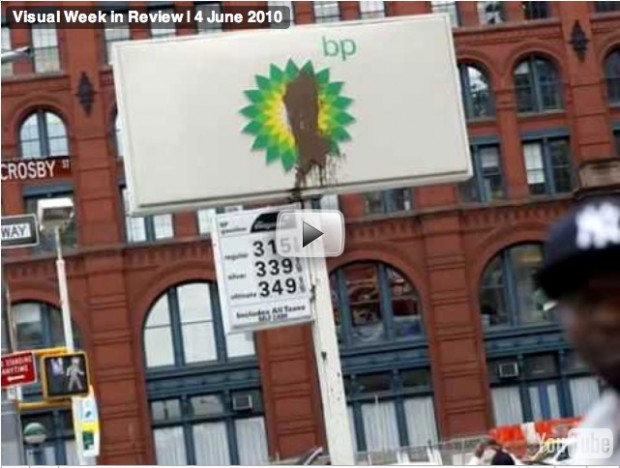Notes
Seeing that Nature Can't Be Fooled
The physicist Richard Feynman has famously remarked that “For a successful technology, reality must take precedence over public relations, for Nature cannot be fooled.” Those of us familiar with both the clean, green British Petroleum logo and the Deepwater Horizon oil spill have good reason to savor the remark. More than irony is needed to get to a better world, however, not least for those of us who spend much time on technologies, such as computers and the Web, that are wholly dependent on the electrical grid and the large-scale energy production that fuels it. If visual culture is to be more than part of the problem (think of that BP logo), then there is need to look at more than oil-soaked birds or those hypnotic video images of robots at the well head. In fact, thinking about better approaches to resource management might benefit from more ordinary images of events that are still dramatic but less than horrific.
The walls of the sunken cylinder in the above photo are so uniformly even that it could be another feat of engineering–perhaps the footprint for a missile silo. No one expects to see an underground silo along a city street, however, so something is amiss. Seriously amiss, as it happens: you are looking at an enormous sinkhole in Guatemala City, Guatemala. The hole opened suddenly following Tropical Storm Agatha, devouring a factory that had closed for the day only an hour before. No harm, no foul, perhaps, but this is not what you want to see happening in your neighborhood.
The illusion that it could be engineered is indicative of the larger tension exposed by the photo. The built environment all around the hole is engineered, which means that it is the result of carefully working with nature rather than trying to fool it, manipulate it through magic, or otherwise live at its mercy. Nature has no mercy, and engineering either provides or protects a great deal of what is necessary for a good life in the modern world. But the more successful and extensive the engineering, the greater the consequences when nature does expose errors in calculation.
Oops! This photo of a landslide across Highway 3 in Taiwan is somewhat of an inverted image of the one above. Here the earth rises above the street instead of having disappeared below, but in each case the built environment is drastically disrupted by the earth moving as it will and without any respect for the purposes and plans of those who build upon it. The photo is more comic than catastrophic, however: perhaps it will inspire a B movie, say, “Revolt of the Hill Creatures.” If done well, we’ll learn that all they really want is to be left alone–that, and love, of course.
I’m featuring these photos in order to point out not only that nature can’t be fooled, but that humans will continue to fool themselves. That highway is an impressive piece of engineering, but not one that could have anticipated every change in topography. The sinkhole in Guatemala is not the first in that area, but few would expect everyone living there to pack up and leave (and then what–move to San Francisco?) At some level, the illusion that it can’t happen here may be essential for human life. That does NOT excuse hubris, however, and BP and other global-scale offenders should be penalized and regulated to the hilt. Even so, the innovation needed to develop a sustainable society has to come at all levels, and especially in respect to the humble but still difficult tasks of restoring local communities.
Perhaps one reason why I like these photos is that they are relatively humble. The record distinctive events, but the images themselves are rather straightforward. They show disasters but relatively small scale disasters, and they are more instructive than dazzling. The perspective afforded is not the engrossing close-up but rather the relatively detached aerial view. Indeed, it is that calculated distance from the scene, that long view and the comic willingness to admit to one’s own faults that may be a critical part of seeing our way to a sustainable society.
(Note: The Feynman quote is from the report of the Presidential Commission on the Space Shuttle Challenger Accident, Volume 2: Appendix F – Personal Observations on Reliability of Shuttle by R.P. Feynman. And despite my crack about oil-soaked birds, I have to applaud The Big Picture for breaking through the fourth wall with these photos.)




Reactions
Comments Powered by Disqus